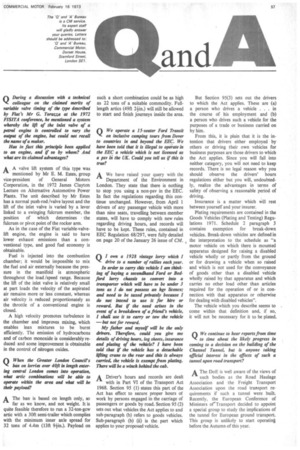Q During a discussion with a technical colleague on the claimed
Page 59

If you've noticed an error in this article please click here to report it so we can fix it.
merits of variable valve timing of the type described by Fiat's Mr G. Torazza at the 1972 FISITA conference, he mentioned a system whereby the 4ft of the inlet valve of a petrol engine is controlled to vary the output of the engine, but could not recall the name of a maker.
Has in fact this principle been applied to an engine, and if so by whom? And what are its claimed advantages?
A A valve lift system of this type was
mentioned by Mr E. M. Estes, group vice-president of General Motors Corporation, in the 1972 James Clayton Lecture on Alternative Automotive Power Plants. The unit described by Mr Estes has a normal push-rod /valve layout and the lift of the inlet valve is varied by a lever linked to a swinging fulcrum member, the position of which determines the fulcrum or pivot point of the rocker arm.
As in the case of the Fiat variable-valvelift engine, the engine is said to have lower exhaust emissions than a conventional type, and good fuel economy is obtainable.
Fuel is injected into the combustion chamber; it would be impossible to mix the fuel and air externally because the pressure in the manifold is atmospheric throughout the load /speed range. Because the lift of the inlet valve is relatively small at part loads the velocity of the aspirated air remains more or less constant, whereas air velocity is reduced proportionately as the throttle of a conventional engine is closed.
A high velocity promotes turbulence in the chamber and improves mixing, which enables lean mixtures to be burnt efficiently. The emission of hydrocarbons and of carbon monoxide is considerably reduced and some improvement is obtainable in the control of nitrogen oxides.












































































































